 Movies and TV
Movies and TV  Movies and TV
Movies and TV  History
History 10 Things You Never Knew About Presidential First Ladies
 Movies and TV
Movies and TV 10 Zombie Movies That Will Actually Terrify You
 Humans
Humans 10 Times Scientists Were Absolutely Sure… and Absolutely Wrong
 Our World
Our World 10 Pivotal Moments for Life on Earth
 Movies and TV
Movies and TV 10 Most Realistic Medical TV Shows of All Time
 Creepy
Creepy 10 Eerie & Mysterious Ghosts of the Pacific Coast
 Weird Stuff
Weird Stuff 10 Typos That Accidentally Changed History
 History
History 10 Times Trickery Won Battles
 Technology
Technology 10 Awesome Upgrades to Common Household Items
 Movies and TV
Movies and TV 10 Movie Flops That Found Their Way to Cult Classic Status
 History
History 10 Things You Never Knew About Presidential First Ladies
 Movies and TV
Movies and TV 10 Zombie Movies That Will Actually Terrify You
Who's Behind Listverse?

Jamie Frater
Head Editor
Jamie founded Listverse due to an insatiable desire to share fascinating, obscure, and bizarre facts. He has been a guest speaker on numerous national radio and television stations and is a five time published author.
More About Us Humans
Humans 10 Times Scientists Were Absolutely Sure… and Absolutely Wrong
 Our World
Our World 10 Pivotal Moments for Life on Earth
 Movies and TV
Movies and TV 10 Most Realistic Medical TV Shows of All Time
 Creepy
Creepy 10 Eerie & Mysterious Ghosts of the Pacific Coast
 Weird Stuff
Weird Stuff 10 Typos That Accidentally Changed History
 History
History 10 Times Trickery Won Battles
 Technology
Technology 10 Awesome Upgrades to Common Household Items
Top 10 Unusual or Unique Flags
Flags have been used since before we began recording history, to symbolize movements, peoples and even individuals. Every country in the world has a flag – some weird, some beautiful and some incredibly boring (Libya’s flag for instance – plain green and nothing else). This list looks at ten flags, or types of flags, that are unique in one or another aspect from other flags.

Flags originated in China and India and spread around the world. Because they are so ancient it is not possible to pinpoint the very first, so we are doing the next best thing by including the Dannebrog – the world’s oldest state flag still in use. Dating back to the 13th century – allegedly June 15, 1219, the Dannebrog is the state flag of Denmark and is the inspiration behind the design of many other scandinavian country’s flags. Prior to its adoption the flag most commonly in use in the region was the Viking raven banner which was triangular in shape and carried the image of a Raven. Austria also lays claim to having the oldest flag though their flag most likely appeared around 1230.
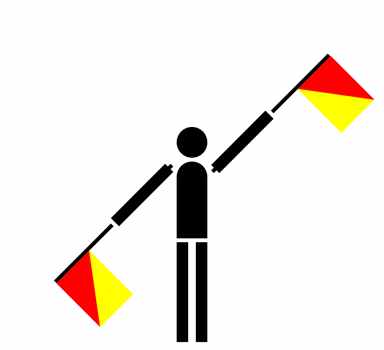
Language doesn’t just come in the form of speech and movement. Semaphore Flags are a system for conveying information at a distance by means of visual signals with hand-held flags, rods, disks, paddles, or occasionally bare or gloved hands. Information is encoded by the position of the flags; it is read when the flag is in a fixed position. Semaphores were adopted and widely used (with hand-held flags replacing the mechanical arms of shutter semaphores) in the maritime world in the early 1800s. Semaphore signals were used, for example, at the Battle of Trafalgar. This was the period in which the modern naval semaphore system was invented. This system uses hand-held flags. It is still used during underway replenishment at sea and is acceptable for emergency communication in daylight or, using lighted wands instead of flags, at night.
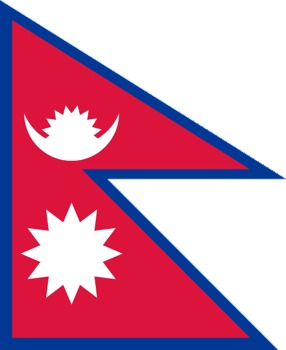
The flag of Nepal is the only national flag in the world that is not rectangular. The flag is a simplified combination of two single pennants. Its crimson red is the color of the rhododendron, the country’s national flower. Red is also the sign of victory in war. The blue border is the color of peace. Until 1962, the flag’s emblems, the sun and the crescent moon, had human faces. They were removed to modernize the flag. The faces remained on the sun and the moon on the Royal Standard until the abolition of the monarchy in 2008. The flag was adopted, with the formation of a new constitutional government, on December 16, 1962. The individual pennants had been used for the preceding two centuries and the double pennant since the 19th century.

The white flag is an internationally recognized protective sign of truce or ceasefire, and request for negotiation. It is also used to symbolize surrender, since it is often the weaker military party which requests negotiation. A white flag signifies to all that an approaching negotiator is unarmed, with an intent to surrender or a desire to communicate. Persons carrying or waving a white flag are not to be fired upon, nor are they allowed to open fire. The use of the flag to surrender is included in the Geneva Conventions.

The black flag, and the color black in general, have been associated with anarchy since the 1880s. Many anarchist collectives contain the word “black” in their names. There have been a number of anarchist periodicals titled Black Flag. The uniform blackness of this flag is representative of the negation of all oppressive structures, in deliberate contrast to the colorful flags typical of most nation-states. Additionally, as a white flag is the universal symbol for surrender to superior force, the black flag is a symbol of defiance, an opposition to surrender.
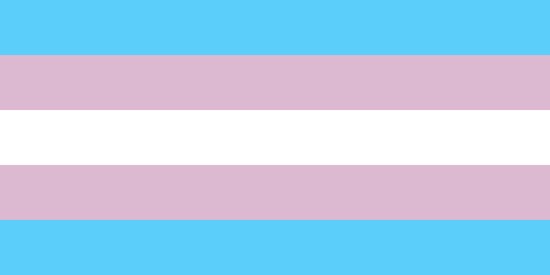
We are all familiar with the rainbow flag of the gay pride movement, but less well known is the transgender flag. It was created in 2000, and first flown at a pride Parade in Phoenix, Arizona, that year. The flag designer most aptly sums up its meaning, so I will let her speak: “The light blue is the traditional color for baby boys, pink is for girls, and the white in the middle is for those who are transitioning, those who feel they have a neutral gender or no gender, and those who are intersexed. The pattern is such that no matter which way you fly it, it will always be correct. This symbolizes us trying to find correctness in our own lives.”
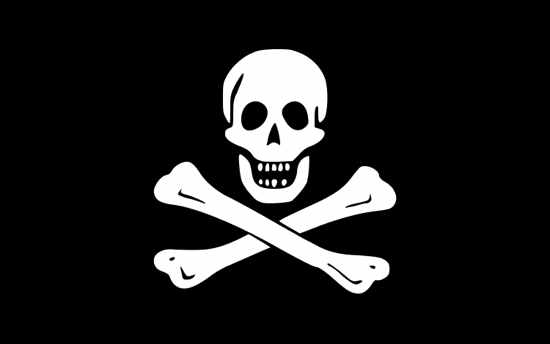
The Jolly Roger is the name given to any of various flags flown to identify a ship’s crew as pirates. The flag most usually identified as the Jolly Roger today is the skull and crossbones, a flag consisting of a human skull above two long bones, set in an x-mark arrangement on a black field. This design was used by several pirates, including Captains Edward England and John Taylor. Some Jolly Roger flags also include an hourglass, another common symbol representing mortality and death in 17th and 18th Century Europe. Despite its prominence in popular culture, plain black flags were often employed by most pirates in the 17th-18th century.
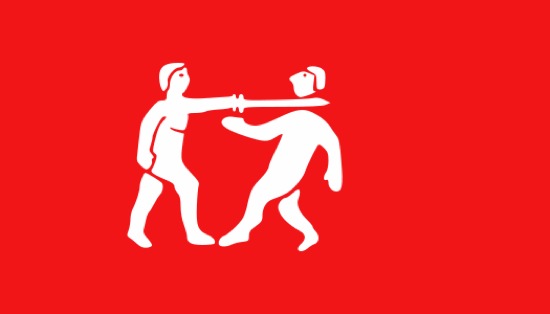
This unusual flag is commonly (and wrongly) attributed to the Benin Empire. It is one of four currently held at the National Maritime Museum in Greenwich near London. There is some uncertainty about the exact origin of the flag, and whether it came from Benin itself or was used by the forces of its Itsekiri allies. The name ‘Kennedy’ on the paper label attached to the flag seems to indicate it was brought back by Admiral F.W. Kennedy from the 1897 expedition against Benin, and so is of Benin origin. The flag, however, is extremely similar to three other West African flags the Museum holds, which originated not in Benin itself but with the neighboring Itsekiri people.

The flag of Mars is a tricolor used to represent the planet of Mars. While not official in any legal sense, it has been approved by, and is used by, the Mars Society and The Planetary Society. The flag is designed to portray the “future history” of Mars. The red bar, which lies closest to the mast, symbolizes Mars as it is today. The green and blue symbolize stages in the possible terraforming of Mars, should humanity ever have the will and the ability to undertake such a task, the ethics of terraforming remaining a matter of debate.
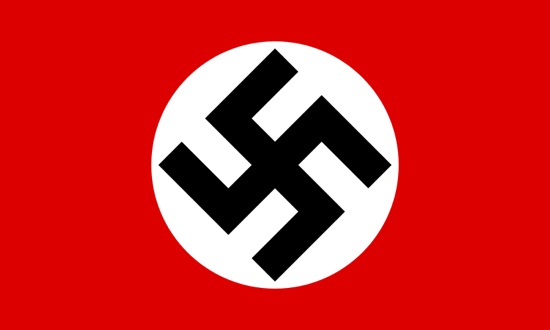
The Nazi flag is probably the most controversial flag in man’s history. It is even banned in a number of countries today. The flag was designed by Hitler himself, who thought it was necessary to use the same colors as Imperial Germany, because, in his opinion, they were “revered colors expressive of our homage to the glorious past and which once brought so much honor to the German nation.” The most important requirement was that “the new flag… should prove effective as a large poster” because “in hundreds of thousands of cases a really striking emblem may be the first cause of awakening interest in a movement.”
Text is available under the Creative Commons Attribution-ShareAlike License; additional terms may apply. Text is derived from Wikipedia.








